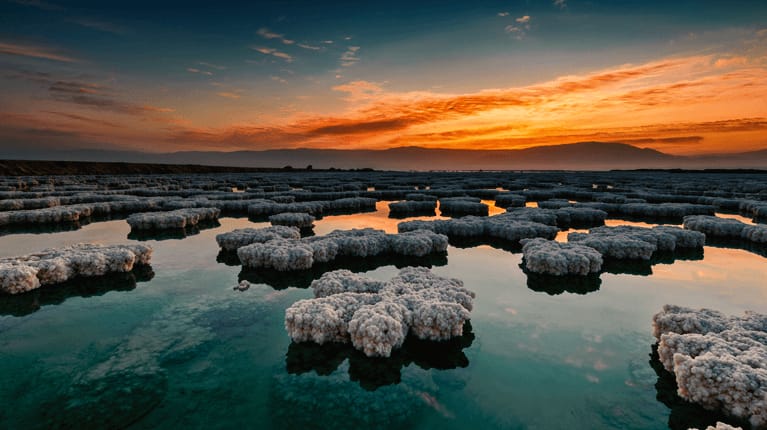The Dead Sea, also known as the Salt Sea, is a remarkable natural feature located in the Middle East.
More Details About The Dead Sea

- Location: The Dead Sea is situated in the Jordan Rift Valley, bordered by Jordan to the east and Israel and Palestine to the west. It is part of the larger Jordan River Basin.
- Salinity: The Dead Sea is famous for its incredibly high salinity. The water is about 10 times saltier than regular seawater, with a salinity level of around 33.7%. This extreme salinity makes it almost impossible for most aquatic life to thrive in the sea, hence the name “Dead” Sea.
- Unique Properties: Due to its high salt concentration, people can easily float on the surface of the Dead Sea. The buoyancy is a result of the water’s density, which is higher than that of the human body. Visitors often enjoy the sensation of effortless floating.
- Minerals: The Dead Sea is rich in various minerals, including magnesium, calcium, potassium, and bromine. These minerals have led to claims of therapeutic benefits, and the sea’s mud and minerals are used in cosmetic and spa products.
- Declining Water Levels: Over the years, the water level of the Dead Sea has been steadily decreasing due to factors such as diversion of its main water sources, including the Jordan River. This has led to the formation of sinkholes along the shoreline and concerns about the long-term environmental impact.
- Tourism: Despite its harsh environment, the Dead Sea is a popular tourist destination. Visitors come to float in its unique waters, experience the mud’s supposed healing properties, and enjoy the stunning desert landscape surrounding the sea.

Overall, the Dead Sea is a natural wonder known for its extreme salinity, mineral-rich waters, and its ability to offer a distinctive and therapeutic experience for those who visit.
